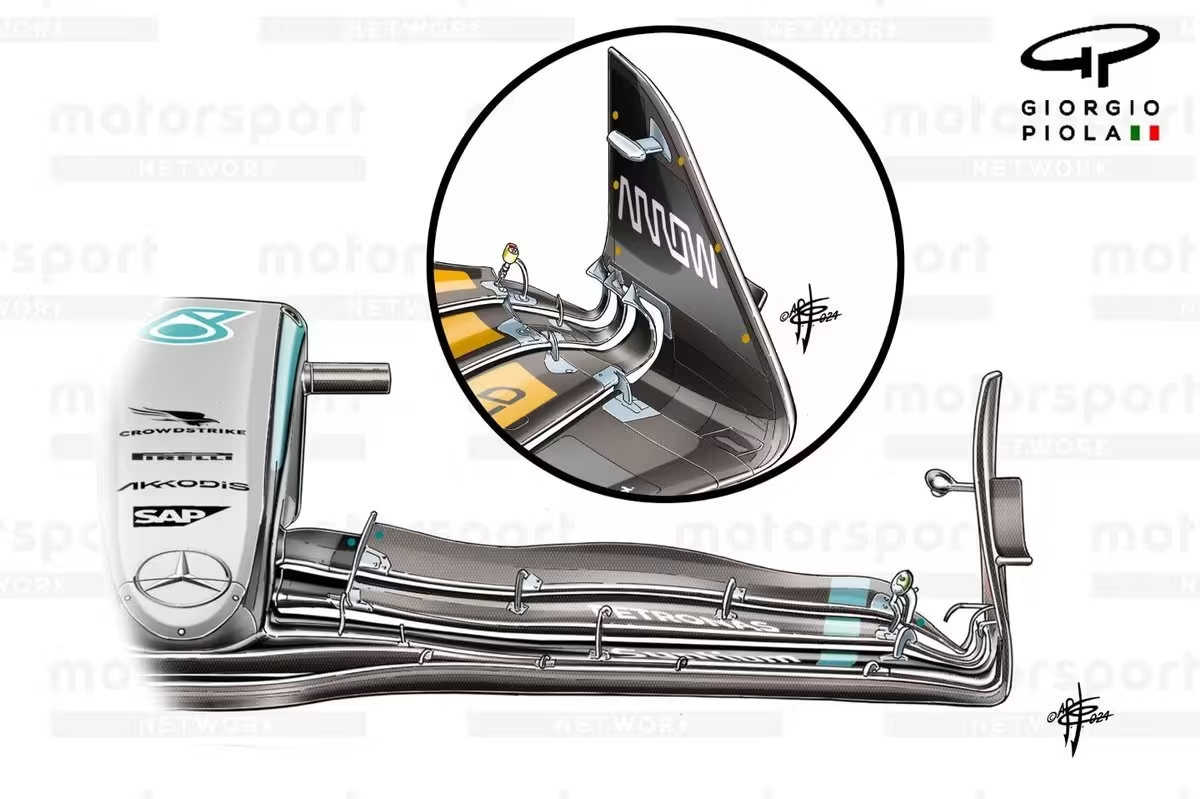The FIA’s directive to Formula 1 teams that it plans video checks of flexi wings at the Belgian Grand Prix prompted fears of potential controversy on the horizon.
With there being an increased use of flexible front wings by teams up and down the grid to help better balance their cars, any mid-season change in this area could have implications on the relative performance of squads.
Even a small shift in the strengths or weaknesses of F1’s frontrunners, with things being so close at the front, could in theory dictate how the rest of the championship battle plays out.
But Autosport has learned that the main motivation for the new flexi wing checks is not to trigger a potential clampdown on what teams are doing right now.
Instead, it is more about helping the FIA get a clearer picture of what teams are doing with the front wing – with a view to then seeing if changes need to be made for 2025 and beyond to make F1’s regulations better.
According to sources, the FIA’s long-standing stance that it is happy that there is nothing wrong with what is currently being run, made clear to teams in recent Technical Advisory Committees, remains in force despite what is being planned for Belgium.
Watch: View from the Paddock – F1 News – Hungarian Grand Prix Thursday
What is coming for Spa
The issue of flexi wings has been ever-present in modern F1, with constant questions being raised over the flexibility of components – floors, rear wings or front wings.
In the technical directive sent to F1 teams this week, the FIA notified competitors that some of them would be required to create a new camera housing for the nose.
This housing will allow for the mounting of 4K cameras, whose make has also been specified by the governing body, and which will capture footage of the front wing’s deflection while on track.
Selected teams will have to place a number of reference dots on the front wing elements and endplate, for them to be tracked in the footage and provide intelligence on the wing’s behaviour over a range of conditions.
“The intent will be to measure across several events all front wings with a camera provided by the FIA which will be installed on the nose (in place of current camera housings) offering a sideways view. The collected data will be used to enhance overall understanding of bodywork flexibility when defining future regulations,” an FIA spokesperson said.
“This new technical directive is the result of a…
Click Here to Read the Full Original Article at Autosport.com – Formula 1 – Stories…

